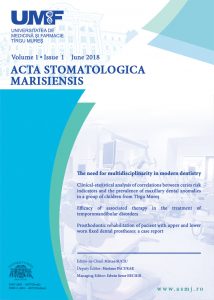Temporomandibular disorders (TMD) affect the temporomandibular joints, the masticatory muscles, and surrounding tissues. Among symptoms such as jumps, joint noises, reduced mouth opening (closed lock), difficulties in closing the mouth (subluxation or open lock), pain is the most common symptom encountered among patients diagnosed with temporomandibular disorders. As literature on this topic is abundant and sometimes controversial, the authors focus on reviewing the state of art of occlusal splints indications. Therefore, the most common occlusal splints, like Lucia jig, nociceptive trigeminal inhibition (NTI), directive splints, etc., are being described, based on their design and therapeutic indications. Cases of malocclusions associated or not with parafunctions are usually manageable using the splints mentioned in this article. In case of disc displacements, occlusal appliances can be used, but as the etiology is multifactorial, there are some limitations, depending on the complexity of each clinical situation.
Andreea Kui 1, Silvia Pop 2, Smaranda Buduru 1, Marius Negucioiu 1
1 Iuliu Hatieganu University of Medicine and Pharmacy, Cluj-Napoca, Romania
2 George Emil Palade University of Medicine, Pharmacy, Science, and Technology of Targu Mures, Romania
1 Iuliu Hatieganu University of Medicine and Pharmacy, Cluj-Napoca, Romania
2 George Emil Palade University of Medicine, Pharmacy, Science, and Technology of Targu Mures, Romania

Comments are closed.